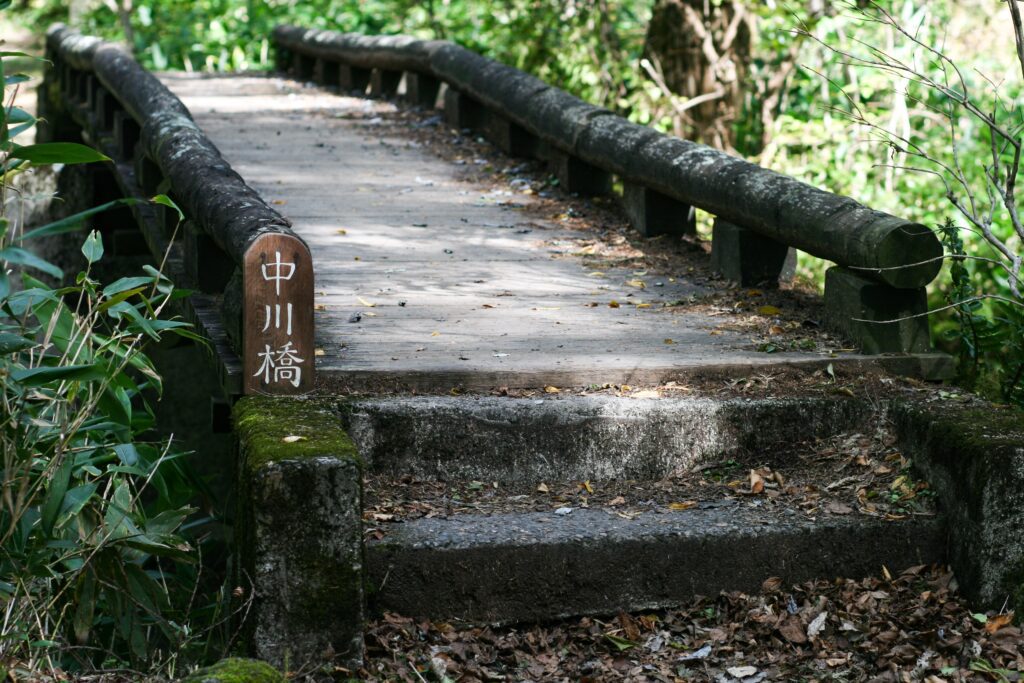In this article, we will be discussing the step-by-step process of setting up a French drain for your AC unit. By the end of this guide, you will have a clear understanding of how to create an effective drainage system for your air conditioning unit, helping to prevent any water damage. We will cover the materials needed, the installation process, and important tips to ensure success. Let’s get started and make sure your AC unit stays problem-free!
What is a French Drain?
Definition and purpose
A French drain is a trench filled with gravel or crushed stone and a perforated pipe that redirects excess water away from a particular area. It is designed to prevent water accumulation and potential damage to buildings or structures. In the context of an air conditioning (AC) system, a French drain is essential for proper drainage and to ensure the longevity and performance of the system.
How it works in AC setup
In an AC setup, a French drain is used to remove excess condensate water that is produced during the cooling process. The drain is connected to the AC unit’s condensate pipe, allowing the water to flow away from the unit and preventing it from pooling around the system. By effectively removing the condensate water, the French drain helps to prevent water damage to the AC unit and maintain its optimal performance.
Importance of Proper Drainage for AC
Prevents water damage
Proper drainage is crucial for an AC system as it helps to prevent water damage. Excess water that is not properly drained can lead to water leakage, which can cause structural damage to the building or damage to the AC unit itself. This can result in costly repairs and potential interruptions to the cooling system.
With a well-installed French drain, any condensate water produced by the AC system is efficiently guided away from the unit and safely diverted to a designated drainage area. This prevents water from accumulating and eliminates the risk of water damage to the AC system and the surrounding area.
Improves AC performance
In addition to preventing water damage, proper drainage also contributes to improved AC performance. When excess condensate water is not properly drained, it can interfere with the AC unit’s airflow and affect its cooling efficiency. The presence of standing water can also lead to the growth of mold and mildew, which can further impact the air quality and overall performance of the system.
By installing a French drain, the excess condensate water is effectively removed, allowing the AC unit to operate at its full capacity. This ensures proper airflow, optimal cooling performance, and enhanced energy efficiency of the system.
Ensures longevity of AC system
A well-maintained AC system can have a longer lifespan, and proper drainage is a crucial aspect of its maintenance. Without proper drainage, the AC unit is at risk of water damage, which can cause corrosion, rust, and electrical issues. These problems can significantly shorten the lifespan of the system and lead to frequent breakdowns and repairs.
With a properly installed French drain, the risk of water damage is minimized, allowing the AC system to operate efficiently and reducing the likelihood of premature failure. By ensuring proper drainage, homeowners can extend the life of their AC system and avoid costly replacements.



This image is property of images.unsplash.com.
Materials and Tools Required
To set up a French drain for an AC system, you will need the following materials and tools:
- French drain pipe
- Gravel or crushed stone
- Perforated pipe
- Sump pump (if necessary)
- Shovel
- Level
- Tape measure
- PVC glue
- Drainage fabric
These materials and tools are essential for the successful installation of a French drain system. Each item plays a specific role in the process and ensures that the drainage system is properly set up.
Step 1: Planning and Design
Determine drainage route
Before starting the installation process, it is important to determine the drainage route. This involves identifying the area where the excess condensate water will be directed. Ideally, the drainage route should be away from the AC unit and towards a suitable drainage area, such as a natural slope or a designated drainage point.
Calculate slope and run
Once the drainage route is determined, it is necessary to calculate the proper slope and run for the French drain. The slope is the downward angle at which the drain will be installed, and the run is the length of the drain from its starting point to its endpoint. A steeper slope ensures better water flow and drainage efficiency.
Design the drainage system
Based on the drainage route, slope, and run, it is important to design the French drain system. This includes determining the depth and width of the trench, as well as the positioning of the French drain pipe and perforated pipe. A well-designed system will ensure optimal drainage and prevent water from pooling in unwanted areas.



This image is property of images.unsplash.com.
Step 2: Marking and Excavation
Mark the trench route
With the drainage system design in place, the next step is to mark the route of the trench. This can be done using spray paint or stakes and strings to ensure accurate placement. The marked route will serve as a guide during the excavation process.
Excavate the trench
Using a shovel, begin excavating the trench along the marked route. The trench should be dug to the calculated depth and width, allowing enough space for the French drain pipe, gravel or crushed stone, and perforated pipe. It is important to remove any vegetation or debris from the trench to ensure proper installation.
Ensure proper depth and width
As the trench is being excavated, it is crucial to periodically check the depth and width to ensure they match the design specifications. This will help to maintain a consistent slope and run for the French drain system. Adjustments can be made as needed to achieve the desired dimensions.
Step 3: Installing the French Drain
Lay the drainage fabric
To prevent soil or debris from clogging the French drain, it is important to lay a drainage fabric along the bottom and sides of the trench. This fabric acts as a barrier, allowing water to pass through while keeping out unwanted particles. Trim the fabric to fit the dimensions of the trench and secure it in place using stakes or clips.
Place the French drain pipe
Once the drainage fabric is in place, carefully position the French drain pipe in the trench. The pipe should be laid on top of the fabric, making sure it is centered and aligned with the desired slope and run. The pipe should have a slight downward angle to ensure proper water flow towards the drainage area.
Cover with gravel or crushed stone
After placing the French drain pipe, cover it with a layer of gravel or crushed stone. This layer serves as a filter to prevent soil and debris from entering the pipe while allowing water to flow through. The gravel or crushed stone should be evenly spread over the pipe, ensuring full coverage.



This image is property of images.unsplash.com.
Step 4: Connecting to AC System
Identify the AC condensate pipe
To properly connect the French drain to the AC system, it is necessary to identify the AC condensate pipe. This pipe is responsible for carrying the condensate water away from the AC unit. It is usually located near the unit’s evaporator coil or inside the air handler.
Connect the perforated pipe
Connect the perforated pipe to the AC condensate pipe using PVC glue or appropriate fittings. The perforated pipe is designed to collect the condensate water and redirect it into the French drain system. Ensure a tight and secure connection to prevent any leaks or water loss.
Ensure proper fitting and sealing
After connecting the perforated pipe, check for proper fitting and sealing around the connections. Any gaps or loose fittings can result in water leakage and reduced drainage efficiency. Use PVC glue or sealing tape to seal any gaps and ensure a watertight connection between the pipes.
Step 5: Testing and Backfilling
Test the drainage system
Once the French drain and AC system connections are in place, it is important to test the drainage system. Pour a moderate amount of water into the AC condensate pipe to simulate the flow of condensate water. Observe the flow of water through the French drain and check for any signs of leakage or blockage.
Adjust slope if needed
During the testing process, assess the water flow and drainage efficiency of the French drain. If the water does not flow smoothly or there are areas of standing water, adjustments to the slope may be necessary. This can be done by adding or removing soil to achieve the desired slope and improve drainage.
Backfill the trench
Once the drainage system has been tested and any necessary adjustments have been made, it is time to backfill the trench. Carefully fill the trench with soil, ensuring that it is compacted properly to minimize settling. The backfilled area should be level with the surrounding ground to ensure proper water drainage.
Step 6: Optional Sump Pump Installation
Evaluate the need for a sump pump
In some cases, the installation of a sump pump may be necessary to further enhance the drainage system’s efficiency. This is especially true if the drainage area is not naturally sloped or if excess water accumulation is common. Evaluate the site conditions and consult with a professional to determine if a sump pump is required.
Install and connect the sump pump
If a sump pump is needed, follow the manufacturer’s instructions for proper installation. Typically, this involves placing the sump pump in a designated pit or basin and connecting it to the French drain system. The sump pump will automatically activate when water levels rise, pumping the excess water away from the area.
Test the sump pump functionality
After the sump pump is installed, test its functionality to ensure proper operation. Pour water into the sump pit or basin and observe if the pump activates and effectively removes the water. Regularly inspect and maintain the sump pump to avoid malfunctions and ensure its reliable operation.
Step 7: Finishing Touches
Regrade the area
After the drainage system is fully installed, regrade the surrounding area to promote proper water drainage. Adjust the landscape to ensure that water naturally flows away from the AC unit and the drainage system. This can involve reshaping the soil, creating slopes, or installing additional drainage features if needed.
Restore landscaping
If any landscaping was disturbed during the installation process, take the time to restore it once the drainage system is in place. This can include replanting grass, shrubs, or other vegetation to restore the aesthetic appeal of the area. Properly maintained landscaping can also contribute to improved drainage and water management.
Ensure proper water drainage
Finally, ensure that the entire area is properly draining water after the French drain setup. Check for any standing water or signs of poor drainage, and make any necessary adjustments to improve the flow. Regularly inspect the system for any potential issues and address them promptly to maintain optimal drainage performance.
Maintenance and Troubleshooting
Regular inspection and cleaning
To ensure the continued functionality of the French drain system, it is important to regularly inspect and clean the drain. Check for any signs of blockage or clogs and remove any debris that may have accumulated in the drain. Regular cleaning will prevent any potential water backup and maintain effective drainage.
Addressing clogs or blockages
If a clog or blockage is identified during inspection, take immediate action to address the issue. Use a drain snake or a high-pressure water jet to remove any obstructions from the drain. If the blockage is severe or persistent, it may be necessary to seek professional assistance to effectively clear the drain and restore proper functionality.
Monitoring sump pump functionality
For systems that include a sump pump, it is important to regularly monitor its functionality. Test the pump periodically to ensure it activates and removes water as expected. Inspect the pump and its components for any signs of wear or damage, and replace any faulty parts as needed. Regular maintenance and monitoring will help to avoid potential failures and maintain optimal drainage performance.
Safety Precautions
Wearing protective gear
When installing or maintaining a French drain system, it is important to prioritize safety. Wear appropriate protective gear, such as gloves, safety goggles, and work boots, to protect against potential hazards. This includes exposure to sharp objects, chemicals, and potential injury from tools or equipment.
Working in a well-ventilated area
Ensure that the work area is well-ventilated when working with PVC glue or other chemicals. Poor ventilation can result in the inhalation of harmful fumes. If necessary, use a fan or work outdoors to provide adequate air circulation and minimize the risk of respiratory issues.
Using caution with power tools
When using power tools, such as a shovel or drill, exercise caution to prevent accidents or injuries. Familiarize yourself with the proper handling and safety guidelines for each tool. Follow manufacturer instructions, wear appropriate protective gear, and maintain a secure grip to avoid slips or mishaps.
Common Mistakes to Avoid
Inadequate slope or incorrect run
One common mistake to avoid is an inadequate slope or incorrect run for the French drain system. Insufficient slope can result in poor water flow, while an incorrect run can lead to improper drainage. Make sure to calculate and design the slope and run accurately to ensure optimal drainage performance.
Failure to secure pipe connections
Properly securing pipe connections is crucial for preventing leaks and maintaining efficient drainage. Failing to secure these connections can result in water leakage, which can damage the AC system or lead to ineffective drainage. Take the time to ensure all connections are tightly fitted and properly sealed.
Insufficient drainage fabric usage
The drainage fabric plays a crucial role in preventing soil and debris from entering the French drain. Using insufficient fabric or neglecting to install it properly can result in clogging and reduced drainage efficiency. Be sure to use an adequate amount of drainage fabric and securely position it in the trench to keep the drain clear and effective.
Conclusion
In conclusion, a proper French drain setup is essential for the efficient operation and longevity of an AC system. By effectively redirecting excess condensate water away from the unit, a French drain prevents water damage, improves AC performance, and ensures the system’s longevity.
Following this step-by-step guide, homeowners can successfully install a French drain for their AC system. By carefully planning and designing the drainage system, properly excavating and installing the drain, connecting it to the AC system, and regularly maintaining it, homeowners can maximize the benefits of a well-functioning French drain.
By dedicating the time and effort to install a French drain properly, homeowners can enjoy the enhanced performance and extended lifespan of their AC system. Don’t overlook the importance of proper drainage for your AC unit – it’s an investment that will pay off in the long run.
